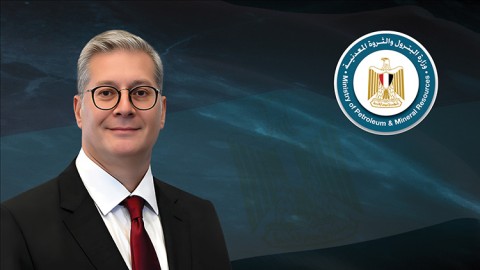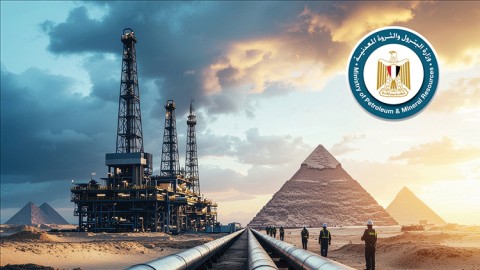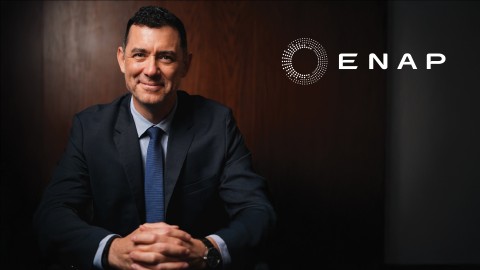As Egypt eyes to be a regional energy hub, the petroleum geology sector plays an inevitable role to achieve this objective with the support of the research and academic community.
EOG discussed with Ahmed Nooh, Head of Geophysics Lab at the Egyptian Petroleum Research Institution “EPRI” and the Professor of Drilling at the British University in Egypt (BUE), how to tap the potentials of Egypt’s petroleum geology to achieve such a goal.
How can petroleum geology studies support Egypt’s exploration efforts?
The Petroleum geology studies support, to great extent, the exploration efforts. These studies provide various subsurface data about the reservoir porosity, permeability, hydrocarbon potentialities, traps, reservoir type (gas or oil, reservoir characterization, quick calculation about production index, thickness and permeability), flow units reservoir characterization, formation pressure to prevent blow out and the reserve estimation (GIP, IOIP).
To what extent does the nature of petroleum geology play a role in supporting Egypt’s strategy to be an energy hub?
The nature of the Egyptian petroleum geology backs such efforts, hence these petroleum geology nature characterized by the simplest structure (folding and faulting) and most of them homogeneous reservoir (except some locations in the Gulf of Suez where there is a complex structure and reservoir heterogeneity) and most of the reservoir present in a considerable depth (3500 m to 5000 m).
All these nature aspects support the production operations and production facilities, as the easy to get the pay zone, the easy to design production equipment.
What are the hidden potentials of the Egyptian Western Desert?
The Western Desert produces 25% of the country’s total production, so the exploration activity at the Western Desert of Egypt is characterized by high activity and most of the concessions are covered and became very clear from the exploration, drilling and Production operation perception.
Most of the exploration operations should be directed to deeper depths than the conventional reservoir ( Abu Roach : A, B, C, D, F and G also Kharetta, Shushan) as Bany sweef basin, which is considered as a new reservoir, especially for the applied drilling technology (Gesturing and RSS).
Also, the newely discovered area present in Abu Senan ( ASH-2 ) for Bor El Arab Co (7000 Bbls/day), and the new geological structure at Gysum and Magor areas are among these promising potentials.
How can you describe the scene of petroleum geology research in Egypt?
I believe that it is very promising, as there is plenty of researches, which shed good light on the most probable new discovered areas, determine the reservoir delineation and extension for further development for more production as directing drilling and provide very useful data about reservoir quality and reservoir characterization (porosity, Permeability, Oil saturation).
It also determines the pore pressure value to prevent the well blow out.
Meanwhile, all these data could build a static and dynamic model for further studies by the reservoir engineers.
In your opinion, do the current training programs in the petroleum geology sector enhance employees’ and students’ skills and prepare them to engage in the market?
The current training programs in the sector need more development to enhance employees’ and students’ skills.
Oil companies’ employees need practical and professional training.
Moreover, they need applied and advanced training courses, particularly in the fields of geosteering, manage pressure drilling, migration path detection, 3D reservoir modeling, real time modeling, and advanced core analysis (SCAL).
In this regard, EPRI is a pioneer institute in offering such training programs. We have both a training administration and a training committee for enhancing the training operation for the oil sector employees.
Also, we have a good experience in training operations across several countries, including Sudan, Saudi Arabia and Chad for example.
For the students, the training programs need to be adapted with their level, and should be applied and fitted to the market needs, especially in mud logging, well site geology, Petrophysics and Geosteering, and core analysis areas.
The new technologies also needed to be applied in their training programs, including the nano application and the artificial intelligence (AI).
In this regard, we are proud that EPRI provides electronic learning for more than 12 universities (500 students) daily as online courses (theoretical and practical alike) due to the Covid-19 pandemic and its related challenges.
How can we establish real cooperation and partnerships between the research community and the petroleum sector?
Real cooperation and partnerships could be established between the two sides through a number of pillars, as both of them need the support of each other.
On the petroleum sector side, it should financially support the research activity to get precise results to make the right decisions.
It should also provide the required data for the projects and the researches, as this is the essential tool for the research efforts.
Furthermore, the industry has common problems that need the research sector to figure out and reach proper solutions to overcome them, such as clay swilling , formation damage and Bacterial activities.
For the research sector, it should focus on further applied and updated researches, as well as using new technologies and software.
They also need to go further through projects that deal with the oil sector to solve the common problems (such as production decrease due to formation damage) and EPRI could provide this project.
Moreover, they need to use highly experienced cadres in research sector as a consultant for oil sector to benefit from their significant experiences.
What do the research institutions in Egypt need to push the petroleum geology sector forward?
Egypt has several research institutions and many of them have a petroleum geology department, such as the exploration department at EPRI.
In my point of view, the exploration should have a mission and vision to support the petroleum geology sector.
Based on that, What is the latest effort made by EPRI concerning enhancing the petroleum geology field in Egypt?
EPRI, under the chairmanship of Pro. Yasser Mostafa, enhances the petroleum geology field as well as the other sectors in Egypt’s oil field through supporting the projects that concentrate on petroleum geology.
For Example, In the Exploration department, we work on a project provided to the oil industry with an aim to increase oil production through mitigating formation damage.
Also, EPRI provides new equipment to solve the petroleum industry sector’s problems; including the earth survey unit and soil analysis) in the exploration department.
Meanwhile, EPRI has a core lab as a distinguished unit to address rock analysis, which is very useful for petroleum sector, as it provides the sector with all kinds of rock analyses (routine and special).
Furthermore, EPRI supports the new researches and accepts the pioneer papers to be published in EPRI’s Egyptian Journal of Petroleum.
We also encourage the protocols signed with different universities to share the new researches and establish a good relation between the exploration sector and oil companies.
In addition, we try to engage the AI and the nano-technologies in the new researches and to provide the petroleum sector with the necessary researches on several petroleum-related topics (structure, reservoir characterization, geophysical analysis, formation evaluation, mud logging), which help them to make the right decisions.
Besides that, we drew several maps for the reservoir pressure, in addition to interoperating and writing reports for the oil companies.
EPRI Provides the oil sector with several analyses as well, especially on source rock, core analysis, soil analysis, XRD and XRF for the mineralogist identification, as well as tapping the latest technologies; such as the satellite technology in the oil industry through a protocol inked with the Egyptian Space Agency.
We also provided the oil industry with a complete field study (starts from exploration to production ) with the assistance of other EPRI’s departments.
What about the research you said that you are currently working on?
Well productivity decline has been widely observed in the Western Desert for oil and gas wells producing the reservoir fines. The phenomenon has been explained by the lifting, migration and subsequent plugging of the pores by the fine particles, finally resulting in permeability decrease. It has been observed in numerous core flood tests and field cases.
This project concentrate on the formation damage by drilling fluids. It focuses on the impact of damage on well productivity, the major mechanisms of formation damage by drilling fluids, assessment and testing of damage, outlines considerations for mud selection and optimization, and removal of mud damage.
We define formation damage for the purposes of this report as any process that impairs the permeability of reservoir formations such that hydrocarbon production (in production wells) or injectivity (in injector wells) is reduced. While formation damage can occur at all stages of well construction, during remedial treatments and during production, this paper is concerned only with damage caused by drilling fluids.
Work in progress in oil companies, service companies and academic institutions will continue to improve our knowledge, which in turn will increase the efficiency with which we produce oil and gas.
Laboratory core flood tests had been used to determine the causes, degree, and extent of the damage. Scanning electron microscopy (SEM) was used to analyze the rock samples used for the core flood test before and after the test. A core flood test had been done to evaluate the effect of acid on damaged cores. Matrix acid stimulation on a case study from the studied field was evaluated.
Also, it was found that Bed- 15 field case study was subjected to formation damage led to a decrease in oil production by 10 to 40%.








